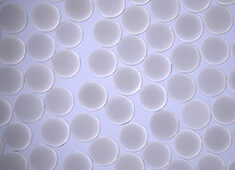
Liangbing Hu, left, and Teng Li, right, are engineers at the University of Maryland, College Park who have found a way to make wood more than 10 times stronger and tougher than before. Credit: University of Maryland
A new method to enhance wood with impressive strength and toughness could ultimately lead to the material replacing steel in some applications.
A team of engineers from the University of Maryland, College Park has found a new process that could make wood as strong as titanium alloys but lighter and cheaper.
“This new way to treat wood makes it 12 times stronger than natural wood and 10 times tougher,” Liangbing Hu, PhD. an associate professor of materials science and engineering and a member of the Maryland Energy Innovation Institute, said in a statement. “This could be a competitor to steel or even titanium alloys, it is so strong and durable. It’s also comparable to carbon fiber, but much less expensive.”
In the study, the researchers explained how the new wood is created.
“Our two-step process involves the partial removal of lignin and hemicellulose from the natural wood via a boiling process in an aqueous mixture of NaOH and Na2SO3 followed by hot-pressing, leading to the total collapse of cell walls and the complete densification of the natural wood with highly aligned cellulose nanofibers,” the study states.
The new material is as strong as steel, but six times lighter. It also requires 10 times more energy to fracture than natural wood and can be bent and molded at the beginning of the process.
According to the study, synthetic structural materials with exceptional mechanical performance often suffer from either large weight and adverse environmental impact or complex manufacturing processes and high costs. While natural wood is low-cost and abundant, the mechanical performance is unsatisfactory for many advanced engineering structures and applications.
The researchers shot bullet-like projectiles at both the new wood material and natural wood. The projectile blew straight through the natural wood, but was stopped partway through the new wood material.
The new material could yield a lightweight, high performance structural material that could be used in cars, airplanes, buildings or any application where steel is used.
“Soft woods like pine or balsa, which grow fast and are more environmentally friendly, could replace slower-growing but denser woods like teak in furniture or buildings,” Hu said.
The study was published in Nature.




